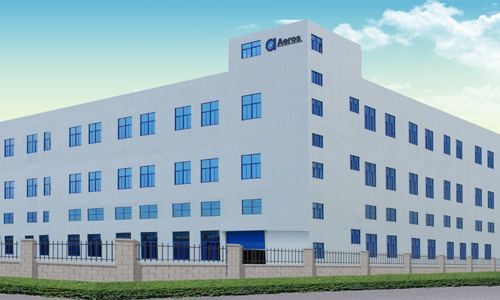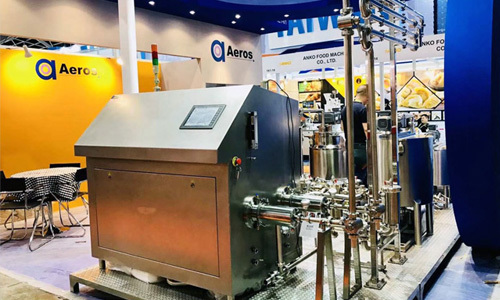Understanding Continuous Aeration Machines in Wastewater Treatment

2024/11/04
In the realm of wastewater treatment, continuous aeration machines play a pivotal role in enhancing the efficiency of biological processes. These machines are designed to provide a consistent supply of oxygen to aerobic microorganisms, which are essential for breaking down organic matter in wastewater. By ensuring optimal oxygen levels, continuous aeration machines facilitate effective decomposition, leading to cleaner effluents and reduced environmental impact.
One of the primary benefits of continuous aeration machines is their ability to maintain stable oxygen concentrations in treatment systems. In traditional systems, fluctuations in oxygen levels can hinder microbial activity, leading to incomplete treatment and potential odor issues. Continuous aeration mitigates this risk by providing a steady flow of air, thus promoting a healthy environment for microorganisms to thrive. This stability translates to more predictable and efficient treatment outcomes.
Moreover, continuous aeration machines contribute to energy efficiency and cost savings. Many modern systems incorporate advanced technologies such as variable frequency drives (VFDs) that adjust the aeration rate based on the real-time needs of the treatment process. This adaptability not only optimizes energy consumption but also reduces operational costs over time. As organizations increasingly focus on sustainability, the energy-efficient design of continuous aeration machines aligns with broader environmental goals.
In addition to operational efficiency, continuous aeration machines can enhance the overall performance of treatment facilities. By promoting a balanced microbial community, these machines support the rapid digestion of organic pollutants and improve the removal of nutrients such as nitrogen and phosphorus. This is particularly important in meeting regulatory standards for effluent discharge, which can vary significantly by region.
Furthermore, the integration of continuous aeration machines into existing treatment systems can lead to improved resilience against fluctuations in wastewater composition. As industries evolve and new contaminants emerge, treatment facilities must adapt to changing conditions. Continuous aeration provides the flexibility needed to respond to these challenges, ensuring that treatment processes remain effective even under variable loads.
Adopting continuous aeration technology can also enhance the overall longevity of treatment equipment. By preventing the buildup of sludge and ensuring optimal microbial conditions, these machines reduce wear and tear on other components of the wastewater treatment system. This proactive approach to maintenance not only extends equipment lifespan but also minimizes downtime and repair costs.
In conclusion, continuous aeration machines are essential components of modern wastewater treatment facilities, driving efficiency, sustainability, and compliance with environmental regulations. As the industry continues to advance, investing in reliable aeration technologies will be critical for professionals seeking to optimize their wastewater treatment processes. Understanding the benefits and operational principles of continuous aeration machines will empower stakeholders to make informed decisions that contribute to cleaner water and a healthier planet.
One of the primary benefits of continuous aeration machines is their ability to maintain stable oxygen concentrations in treatment systems. In traditional systems, fluctuations in oxygen levels can hinder microbial activity, leading to incomplete treatment and potential odor issues. Continuous aeration mitigates this risk by providing a steady flow of air, thus promoting a healthy environment for microorganisms to thrive. This stability translates to more predictable and efficient treatment outcomes.
Moreover, continuous aeration machines contribute to energy efficiency and cost savings. Many modern systems incorporate advanced technologies such as variable frequency drives (VFDs) that adjust the aeration rate based on the real-time needs of the treatment process. This adaptability not only optimizes energy consumption but also reduces operational costs over time. As organizations increasingly focus on sustainability, the energy-efficient design of continuous aeration machines aligns with broader environmental goals.
In addition to operational efficiency, continuous aeration machines can enhance the overall performance of treatment facilities. By promoting a balanced microbial community, these machines support the rapid digestion of organic pollutants and improve the removal of nutrients such as nitrogen and phosphorus. This is particularly important in meeting regulatory standards for effluent discharge, which can vary significantly by region.
Furthermore, the integration of continuous aeration machines into existing treatment systems can lead to improved resilience against fluctuations in wastewater composition. As industries evolve and new contaminants emerge, treatment facilities must adapt to changing conditions. Continuous aeration provides the flexibility needed to respond to these challenges, ensuring that treatment processes remain effective even under variable loads.
Adopting continuous aeration technology can also enhance the overall longevity of treatment equipment. By preventing the buildup of sludge and ensuring optimal microbial conditions, these machines reduce wear and tear on other components of the wastewater treatment system. This proactive approach to maintenance not only extends equipment lifespan but also minimizes downtime and repair costs.
In conclusion, continuous aeration machines are essential components of modern wastewater treatment facilities, driving efficiency, sustainability, and compliance with environmental regulations. As the industry continues to advance, investing in reliable aeration technologies will be critical for professionals seeking to optimize their wastewater treatment processes. Understanding the benefits and operational principles of continuous aeration machines will empower stakeholders to make informed decisions that contribute to cleaner water and a healthier planet.
Continuous aeration machine







